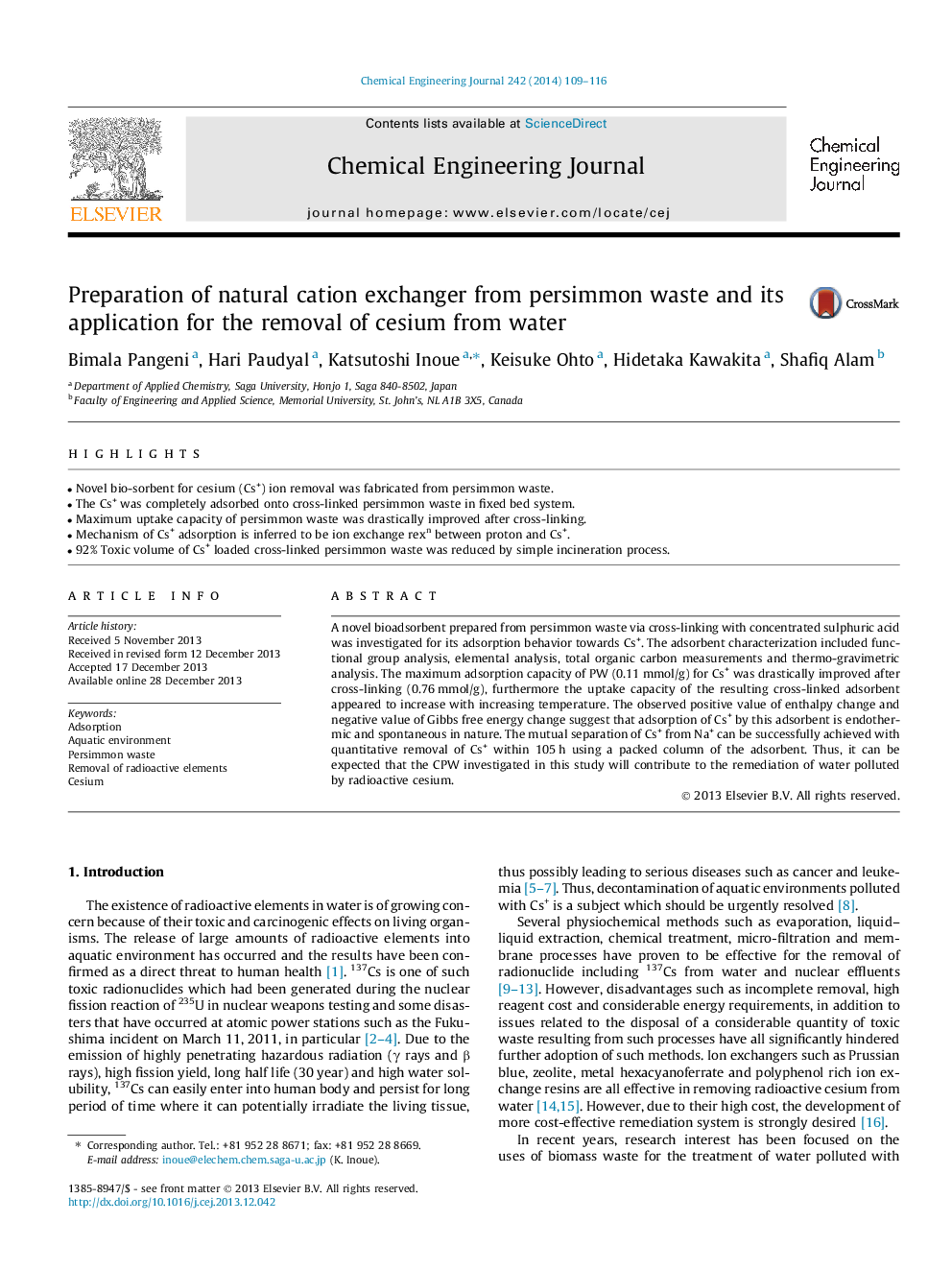| Article ID | Journal | Published Year | Pages | File Type |
|---|---|---|---|---|
| 147630 | Chemical Engineering Journal | 2014 | 8 Pages |
•Novel bio-sorbent for cesium (Cs+) ion removal was fabricated from persimmon waste.•The Cs+ was completely adsorbed onto cross-linked persimmon waste in fixed bed system.•Maximum uptake capacity of persimmon waste was drastically improved after cross-linking.•Mechanism of Cs+ adsorption is inferred to be ion exchange rexn between proton and Cs+.•92% Toxic volume of Cs+ loaded cross-linked persimmon waste was reduced by simple incineration process.
A novel bioadsorbent prepared from persimmon waste via cross-linking with concentrated sulphuric acid was investigated for its adsorption behavior towards Cs+. The adsorbent characterization included functional group analysis, elemental analysis, total organic carbon measurements and thermo-gravimetric analysis. The maximum adsorption capacity of PW (0.11 mmol/g) for Cs+ was drastically improved after cross-linking (0.76 mmol/g), furthermore the uptake capacity of the resulting cross-linked adsorbent appeared to increase with increasing temperature. The observed positive value of enthalpy change and negative value of Gibbs free energy change suggest that adsorption of Cs+ by this adsorbent is endothermic and spontaneous in nature. The mutual separation of Cs+ from Na+ can be successfully achieved with quantitative removal of Cs+ within 105 h using a packed column of the adsorbent. Thus, it can be expected that the CPW investigated in this study will contribute to the remediation of water polluted by radioactive cesium.
